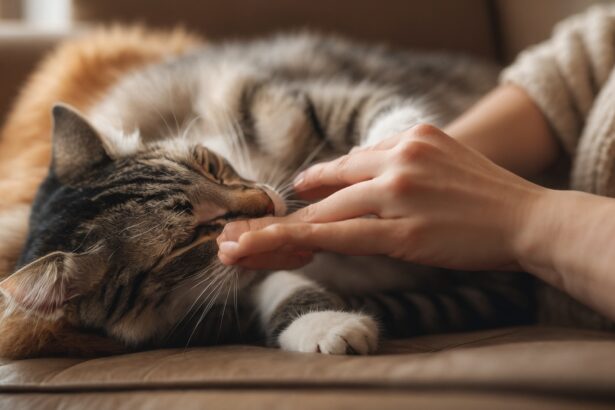Your cat is sneezing, eyes a little weepy, not quite themselves? It might be cat coryza — often nicknamed “cat flu.” Don’t panic: with quick care and a few smart home comforts, most kitties bounce back beautifully.
Cat coryza: what it is and why it matters
Cat coryza is a contagious upper respiratory infection, a bit like a human cold but potentially more serious for felines. It’s usually caused by a mix of germs, mostly viruses.
- Feline herpesvirus (FHV-1): drives sneezing and eye issues.
- Feline calicivirus (FCV): notorious for mouth ulcers and drooling.
- Bacteria (e.g., Chlamydophila, Bordetella): can complicate the picture.
Surprising fact: FHV-1 can lie dormant for life and flare up with stress — a new pet, a house move, even a vet visit. Curious about spotting other health issues early? Here’s a simple guide to recognize warning signs.
Symptoms to watch (and when to worry)
Early, subtle signs
- Sneezing, watery eyes, clear nasal discharge
- Mild fever, tiredness, quieter behavior
- Less interest in food, a softer or stuffier “meow”
As it progresses
- Thick eye/nose discharge, conjunctivitis, breathing through the mouth
- Mouth ulcers (FCV): drooling, pain when eating, bad breath
- Coughing, dehydration, weight loss with poor appetite
Fun twist: some cats with calicivirus can have a temporary “limping syndrome” — a sore leg that resolves as they recover. Seeing lots of drool? This quick guide explains common causes and fixes.
Red flags: call your vet now
- Breathing difficulty, blue-tinged gums, fast or labored breaths
- No eating for 24 hours (or 12 hours if a kitten), severe lethargy
- High fever, dehydration, sudden decline
Diagnosis and treatment: what to expect at the vet
How vets confirm coryza
Expect a full exam, with focus on eyes, nose, mouth, and lungs. Your vet may take swabs for lab tests and, if breathing is affected, chest X-rays to check for pneumonia.
The usual treatment plan
- Supportive care: eye drops, saline cleaning, pain relief, anti-inflammatories
- Antibiotics for bacterial complications as needed
- Antivirals may be considered for herpesvirus in specific cases
- Fluids/nutrition support if dehydrated or not eating
Common mistake to avoid: never give human cold meds or essential oils to a cat. Many decongestants and painkillers are toxic to felines, and strong oils can irritate airways.
Comforting your cat at home
- Keep passages clear: wipe eyes and nose gently with warm saline (fresh cotton each eye).
- Steam trick: run a hot shower and sit with your cat in the steamy bathroom for 10 minutes, twice daily. It helps loosen mucus so they can breathe and eat more comfortably.
- Make food irresistible: warm wet food slightly and offer smelly favorites; a cat who can’t smell won’t want to eat.
- Hydration matters: fresh water, broths without onion/garlic, and wet food.
- Create a cosy recovery zone: warm, quiet room with a humidifier if the air is dry.
- Separate resources: food bowls, water, and litter if you have multiple cats.
Astuce you’ll love: pop a teaspoon of their usual wet food in the microwave for 5–8 seconds to release aroma — just stir and test temperature first. For gentle cleaning sessions, learn safe washing techniques to avoid stressing your feline.
Prevention and vaccination
Why vaccines are your best ally
Core vaccines cover FHV-1 and FCV. They don’t prevent every infection, but they drastically reduce severity and complications — especially vital for kittens and seniors.
Everyday protective habits
- Ease stress: maintain routines, offer safe hiding spots, and enrich playtime.
- Hygiene helps: clean bowls and litter regularly; wash hands between handling cats.
- Isolate newcomers: keep new cats separate for 10–14 days and schedule a vet check before introductions. Need a smooth first meeting? Follow this step-by-step intro guide.
- Avoid contact with sick cats until they’re cleared by a vet.
Your role as a loving owner
Gentle cleaning, tempting meals, and prompt vet care are powerful. Watch for changes, act early, and keep vaccines current — your calm presence speeds recovery more than you think.
FAQ
Is cat coryza the same as a human cold?
Not exactly. It’s a feline upper respiratory infection, usually from feline-specific viruses. It can feel like a cold but may be more serious for cats.
Can humans catch cat coryza?
Coryza isn’t the human cold, and its main viruses are species-specific. Good hygiene is still smart, especially for immunocompromised people.
How long does cat coryza last — and is it contagious?
Mild cases often improve in 7–14 days. Cats can shed germs during illness; some herpes carriers may shed again later under stress.
What safe home care can I try?
Steam sessions, warm smelly food, gentle saline cleaning, and a calm, humid environment. If breathing is hard or appetite drops, call your vet promptly.






